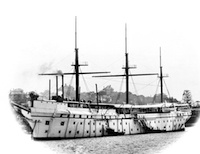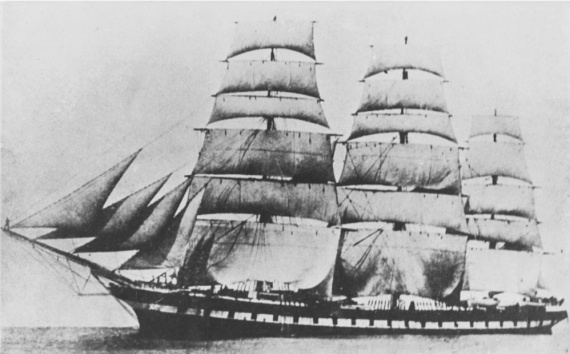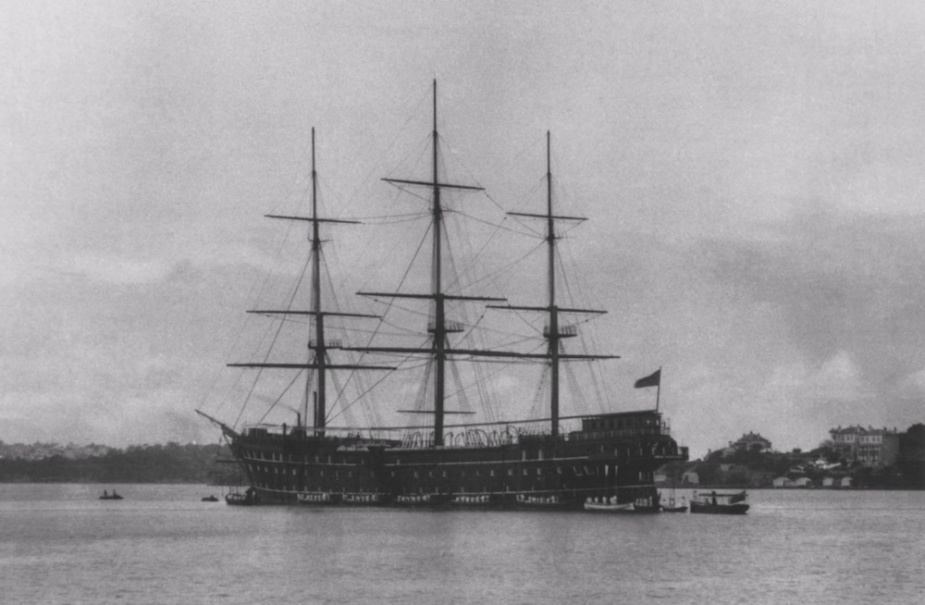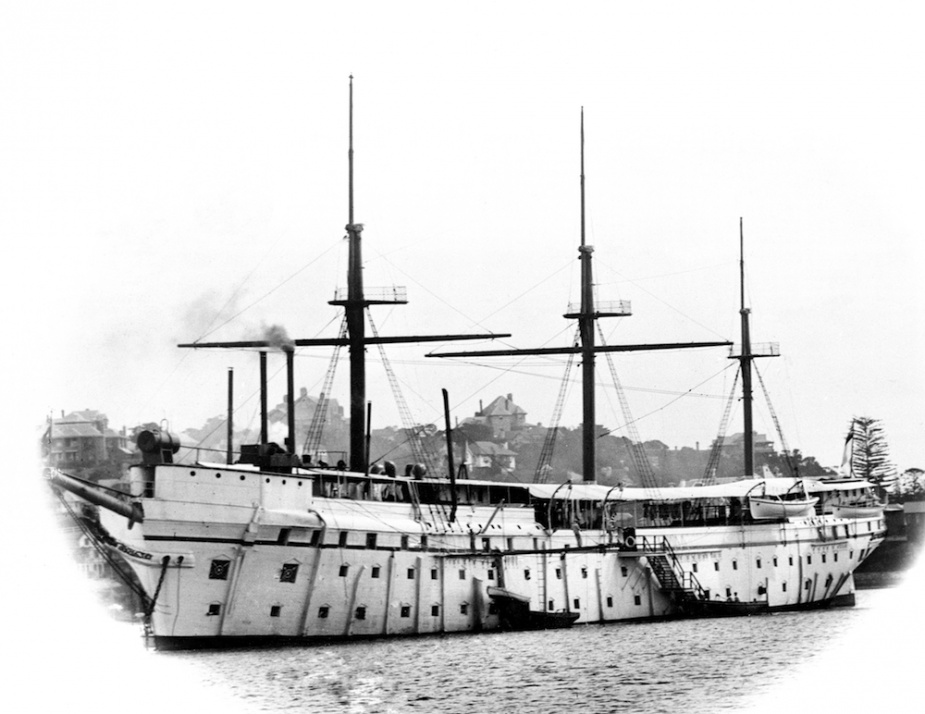The training ship Tingira was originally laid down as the Sobraon for the shipping firm Lowther, Maxton and Co. The original design provided for composite sail and steam propulsion, however, the latter was not incorporated and the ship was completed as a 3 masted clipper relying solely on sail.
With all sails set it had a spread of 2 acres of canvas. There was accommodation for 90 first class and 41 second class passengers. Its decks comprised upper, main, lower and orlop. A large space was reserved for the carrying of livestock, which included pigs, bullocks and sheep. Several hundred poultry was also included and was considered a necessity for the class of passenger carried. Fresh milk was always available for passengers, as cows were part of the livestock for this purpose. It was one of the few ships fitted with a large condenser which allowed the passengers and crew a liberal supply of fresh water daily, in most ships of that period water was rationed. It was also fitted with a large ice chamber which was capale of holding 3 tonnes.
After carrying cargo and passengers between the United Kingdom and Australia for many years it was purchased by the New South Wales government in 1891. Moored off Cockatoo Island and under the control of the New South Wales State Welfare Department it was used as a reformatory or Nautical School Ship for wayward boys until 1911.
Specifications
 |
| Type |
Training Ship |
|---|---|
| Builder |
Alexander Hall & Co, Aberdeen, Scotland |
| Commissioned |
25 April 1912 |
| Decommissioned |
30 June 1927 |
| Dimensions & Displacement | |
| Displacement | 2132 tons (2169 tonnes) |
| Length | 317 feet (96.62 metres) overall |
| Beam | 40 feet (12.19 metres) |
| Draught | 16 feet (4.87 metres) |
| Complement | |
| Crew | Up to 250 boy trainees plus training staff |


